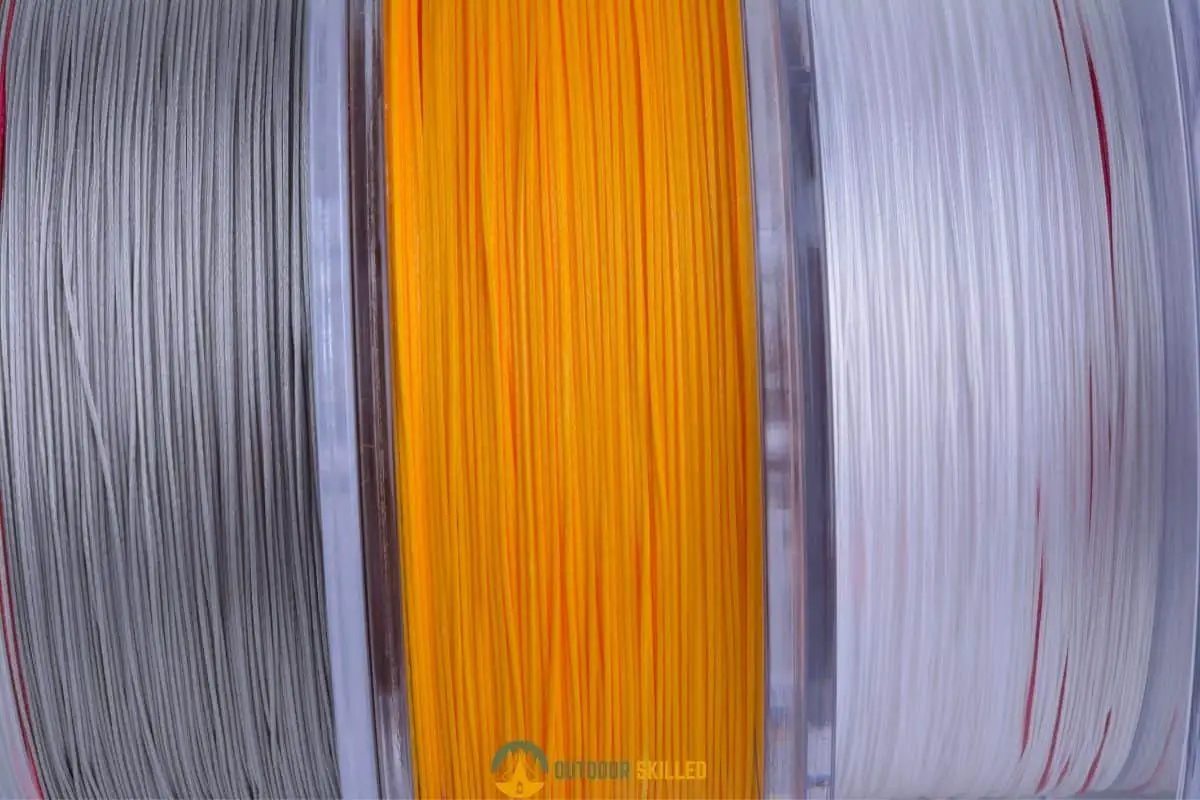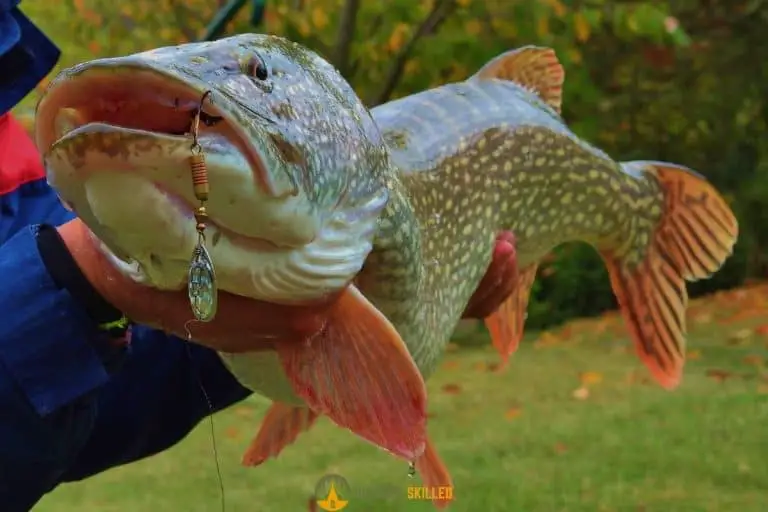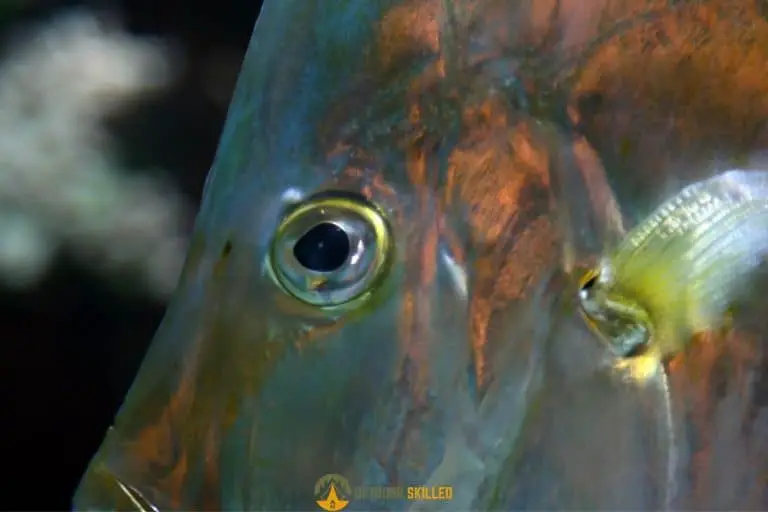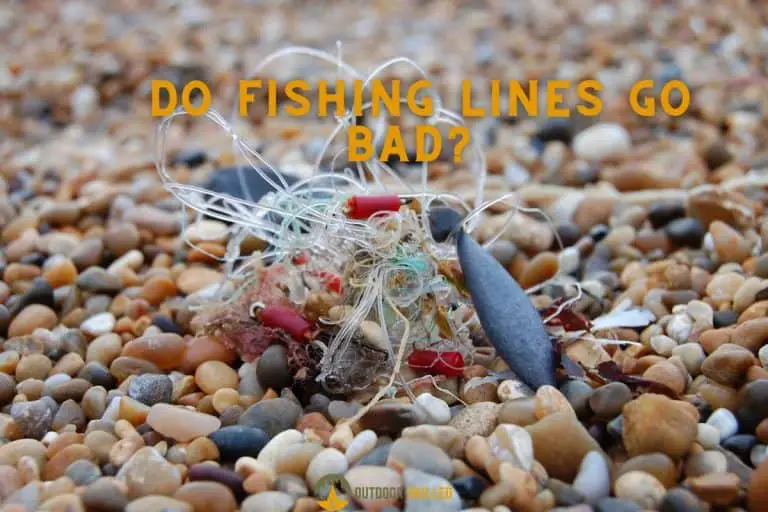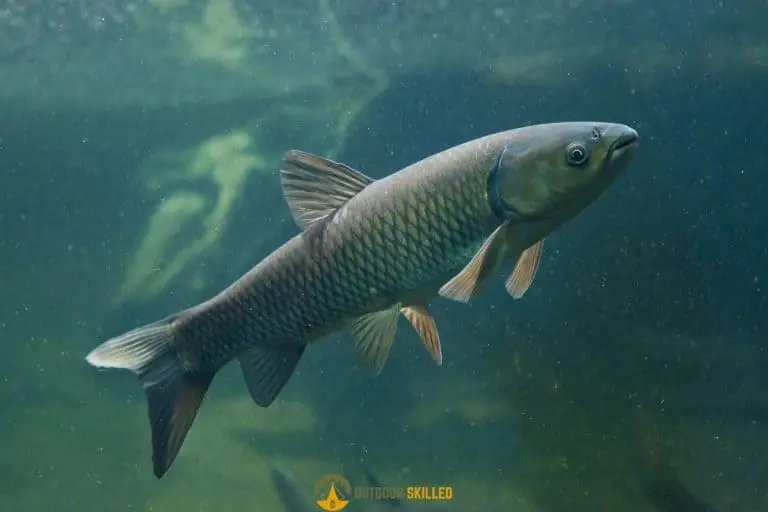When To Use a Braided Fishing Line? (and When You Really Shouldn’t!)
Braided fishing lines were presented to the fishing industry after many other types of lines. However, it gained higher popularity especially in the past previous year because of how effective and suitable it is for several fishing locations and techniques.
So, when to use a braided fishing line? You should use a braided fishing line in specific situations where you’re fishing in heavy weed areas or rapid currents. It’s suitable for fishing techniques such as frogging, flipping and punching, and finesse fishing. They’re also meant to be unbreakable and durable near rough structures.
Keep reading to know more about the optimal use of braided fishing lines in addition to situations where you shouldn’t really rely on them. You can also head over to check out the best braided lines here if you’re looking for an upgrade.
Table of Contents
What Is A Braided Fishing Line?

Braided line is a type of fishing line that is made from natural fibers, such as linen and cotton while fiber braids are made of man-made materials like Dacron, Spectra, and Micro-Dyneema. They’re lightweight yet strong and durable.
Lots of fish can be caught with that line especially those who put up a fight when caught. With braided lines, you can guarantee that you come on top in this battle with a line that won’t easily break by the fish teeth. They’re versatile lines that can be used with a wide variety of lures as well.
The Pros And Cons Of Braided Fishing Lines
Braided lines offer today’s anglers a new versatile tool that, if used correctly, can be excellent in many situations. But just like any other product, it has its advantages and disadvantages, and being aware of both is essential before using it in your next experience.
Pros of braided line
Braided line is now made of synthetic materials and provides superior strength while keeping a small diameter that allows fast casting with less stretch, more flexibility, and more sensitivity for the angler to detect weak strikes or these hits prior to bites not to miss them.
This is another reason why modern braided lines are very difficult to break when snagged and can straighten hooks, saving your expensive lures and the precious strike of a trophy fish. They perform well in heavy cover while flipping or casting, almost eliminating the possibility of line breakage while setting the hook or retrieving fish from these structures.
Braided lines can be excellent choices for fishing in thick aquatic weed mats as well. It allows anglers to muscle the fish out of this heavy cover due to its strength. They’re suitable for freshwater fishing as well as saltwater fishing.
They have a much longer reel life than other lines if properly spooled and treated while in use. It also has an excellent handling capability that allows it to be easily managed and maneuvered.
Cons of braided line
One disadvantage is when snagged, it sometimes becomes very difficult to break. They can put more stress on reel parts, rods, and line guides, causing premature wear and breakage.
Backlashed braided lines can be very difficult to untangle. Most braids require the use of even sharper tools to cut them correctly, as well as the use of a tiny tag to prevent slippage. Concerning water conditions, the braided line may not be the best choice when fishing clear water because they’re relatively visible to fish.
One last thing is that braided line is generally more expensive than monofilament line due to their numerous advantages.
Braided fishing lines also need backing, and you can learn about this in my post on wy braided lines need backing here.
When Should You Use A Braided Fishing Line?
Braided lines are known to be a versatile type of line that can be great options in almost all fishing situations. However, there are specific situations and techniques in which your braided line works exceptionally well in.
Flipping and punching
If you’re fishing in vegetation, a braided line will help you set the hook and muscle the fish to the boat before it has a chance to throw the hook. They’re your go-to while you’re fishing a patch of lily pads, water hyacinths, hydrilla, or stumps, or bashing a heavyweight through matted grass. The braid would be responsible for cutting these plant stems, allowing you to catch a fish without losing them.
Finesse
Being a sensitive line, braided lines are excellent for finesse fishing with small lures. They don’t stretch so they make a great option when you plan to use small lures. Their lightweight balances light lures and makes your experience much better.
Frogging
Braided lines have a lower stretch when compared to monofilament and its thinner diameter also helps it to slice through weeds much easier than either fluorocarbon or mono. Frogging is preferably done with a braid that has a round profile.
A round profile not only slices through vegetation, but also makes for even faster hook-sets because it creates less drag in the water when you hit, so it’s a win-win situation.
When Shouldn’t You Use A Braided Fishing Line?

If you’re fishing in clear water, a braided line isn’t a smart idea. Since braids are visible in clear water, anglers avoid throwing them in clear water because they can scare off fish, particularly if the lure is visible for an extended period of time.
Windy conditions aren’t best to use braided lines either. Since the line is thin and light, the wind will blow it along, causing a lot of wind knots. That is not possible with a thicker and stiffer line.
Trolling in fast currents is another situation when you shouldn’t use braided lines. You’ll run into the same issue of windy conditions; the light line gets moved around and tangles form. In this case, a monofilament line is usually preferable.
How To Spool A Braided Line Properly
Before you get to spooling your line, you must note that a braided fishing line requires the use of a tiny tag on the fishing reel to keep the line from slipping. Some people also use the tag or the backer to help fill the spool as braided lines are known to have a small diameter.
You can fill a portion of the reel spool with a monofilament fishing line and then make a couple of passes around the monofilament with the electrical tape to solve this issue.
If you miss this phase, you can run into some issues. When you turn the handle, you’re prone to two scenarios; either the line will either not retrieve and roll onto the reel, or it will retrieve and then slip, causing you to lose all of the lines you retrieved.
After filling your spool, tie on your braided line and wrap it around the spool. Make sure to spool it really tight and you’re good to go.
Best Braided Lines
I have a full guide on the best braided fishing lines here, but nonetheless, here is a quick list of the best braided fishing lines you can find on the market today. Each one of them has advantages that make it ideal for various situations.

This round, smooth, and sensitive braided fishing line is ideal for almost all fishing techniques. It’s made of Spectra fiber that boosts its strength, abrasion resistance, and durability to a noticeable level. You can check it on Amazon here.

It’s recommended for its perfectly round profile that helps the braided line fly effortlessly through the rod guides. Its high durability is impressive as well in addition to added strength, sensitivity, and water resistance. You can check it on Amazon here.

It’s great for fishing in clear waters and depicts the main disadvantage of braided lines; being visible to fish. In addition to its strength and durability. It’s available in a wide range of different pound tests. You can check it on Amazon here.

This one gives exceptional performance on spinning reels. As a result, this braided fishing line is up to four times stronger than common monofilament lines. It has a smooth finish for quick casting and a super-thin line diameter for unmatched lure action and low visibility in the water. You can check it on Amazon here.

It’s enough to say it’s an international award-winning line, for 4 times! Berkley topped themselves by bonding hundreds of Dyneema nanofilaments into a single, ultra-thin line that is neither braid nor mono. It casts deeper and with greater precision than any other Berkley fishing line due to the weight of the former and the smoothness of the latter.
You can check it on Amazon here.
For more info about braided lines, check out this Braided VS Monofilament lines comparison here.
Related Questions
How Long Will A Braided Line Last?
A braided line will typically last for about 8 to 10 years on the shelf. If you don’t fish much, you should replace your braided fishing lines once a year. If you’re an average angler, you can change your fishing line once or twice a year.
What Colors Should I Use For Braided Fishing Lines?
The colors you should use for braided fishing lines is white, blue, or green. White and blue work best in clearer water or when you’re fishing in the shallows on a sunny bright day, while a darker green works well in stained or murky water.
Helpful Resources
Basic Fishing: A Beginner’s Guide – A Book by Wade Bourne
If you like this article, please share it or pin it, you can find the share buttons below. We will really appreciate it ❤️

